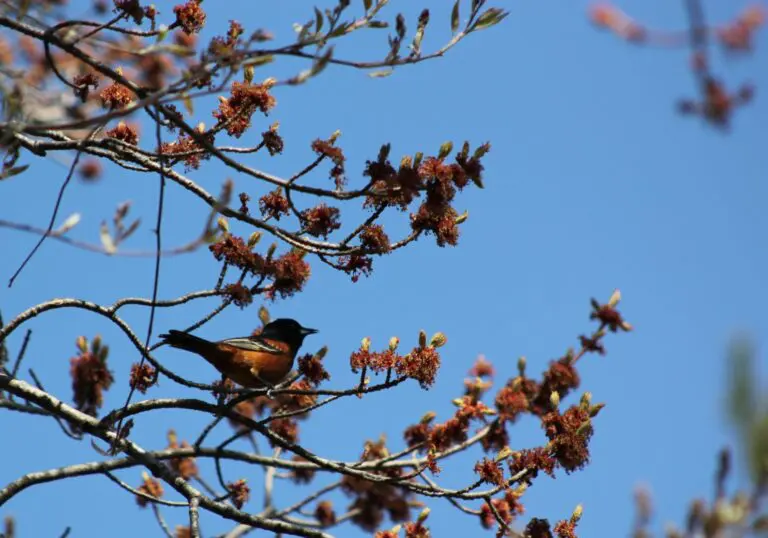It was on one of these mornings, blinking in the summer sun, that I saw one of the biggest eagles I’ve ever seen.
The bird was perched on a fence bordering the old AuSable, calmly ripping into a fish I assume it had just caught for breakfast. Its feathers were dark brown and a bit sloppy. My amateur knowledge wasn’t sure, and still isn’t sure, if it was a young bald eagle or an example of the larger, more elusive golden eagle. All I knew is that it let me get scarily close to it without even batting an eye (yes, eagles have eyelids; I googled to make sure).
I was too entranced by the eagle to remember to take a picture, so that moment lives on only in my memory.
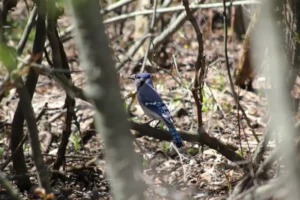
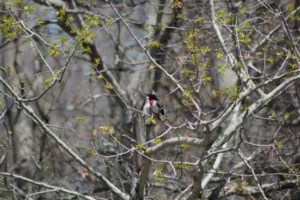
That giant eagle is far from the only bird I’ve seen in the area. Oscoda is home to a lot of year-round avian inhabitants, but it also serves as an in-between point for migrating birds as well. What birds you see depends on the time of year and your chosen location. Hiking along the AuSable River, you can see warblers and woodpeckers amongst the trees. Going farther south to Tuttle Marsh, you have a great chance of seeing herons, cranes, and osprey. And everywhere you go, there’s probably a seagull flying overhead, reminding you that you’re never too far from the shore of Lake Huron.
On the beaches, docks, and piers of Lake Huron, all kinds of species congregate, basking in the sun, dipping their feet into the water, and diving for fish. Droves of seagulls lazing by the waterside are a staple of any proper beach, and the Oscoda beachfront is no exception. Swooping past your head to the waves and back again are the sandpipers, their skinny little wings almost grazing the water. They land on the beach and skitter along the sand like they’re always late to a party.
Farther down the beach, near the marshes and inlets, ducks paddle in the still waters with their fuzzy babies. Cormorants guard the docks, their drying wings spread wide, leering over the crowd like sleek gargoyles.
Bluejays, finches, swans: literally hundreds of species of birds call Michigan home, and Oscoda is a gathering place for many.
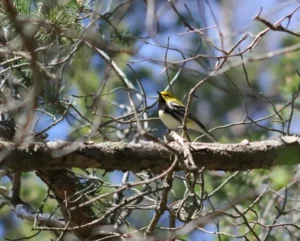

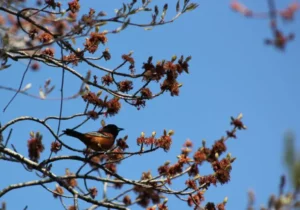
Now, I’ve already mentioned that I’m an amateur when it comes to bird-watching. Until a couple of years ago, everything I knew about birding came from that Steve Martin comedy where three men try to out-bird each other and get up to some shenanigans along the way.
Since then, I’ve learned of the National Audubon Society (along with their Michigan and even more local branches). The Audubon is a non-profit that is involved in all things bird. Their key work includes bird counts to track species movement and numbers, conservation efforts, and informing the people about the differences between a ‘birb’, a ‘borb’, and a ‘floof’ (possibly the most important work they’ve ever done).
So nowadays I know a little bit more about birds and birding—but even before I knew any of that, I got a glimpse of the birding and conservation world.
Sometimes, without meaning to, you stumble into something amazing.
There’s a stretch of beach I love to walk in the late spring and early summer. A few years back, I went with my family to put my toes in the sand, find some petoskey stones, and get some exercise. After some casual searching, I turned away from the lake and the other beachgoers, and there, squatting in the dip between sand hills, was possibly the smallest bird I have ever seen. With its bright tan feathers and confused, bedraggled look, this was a baby I’m sure the Audubon would classify as a floofy birb.
My family and I watched as it scooted with its teeny legs over to the protection of its mom.
The next time I took a walk on that stretch of beach, a short fence had been erected around that area. We found a person to ask about it, and we discovered that the birds we had seen were piping plovers—a “near threatened” species. The fence was to protect the nesting bird from predators, which I figure is a fantastic idea since apparently the way a piping plover nests is to simply scrape out a little patch in the sand, put some rocks and shells to camouflage the egg, and then plop down and hope for the best.
Every time I walked that stretch of beach after that, I kept my eyes peeled for those adorable piping plovers.
As I’ve discovered, it doesn’t take an expert to experience the beauty and diversity of Oscoda birds.
